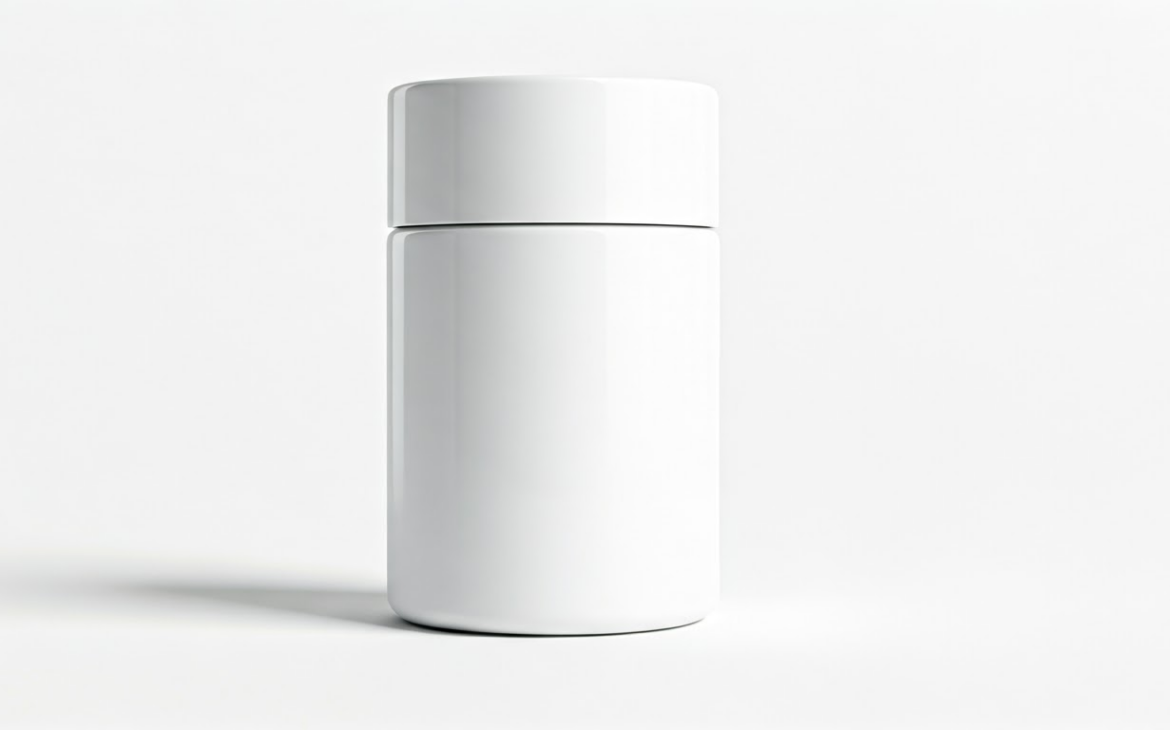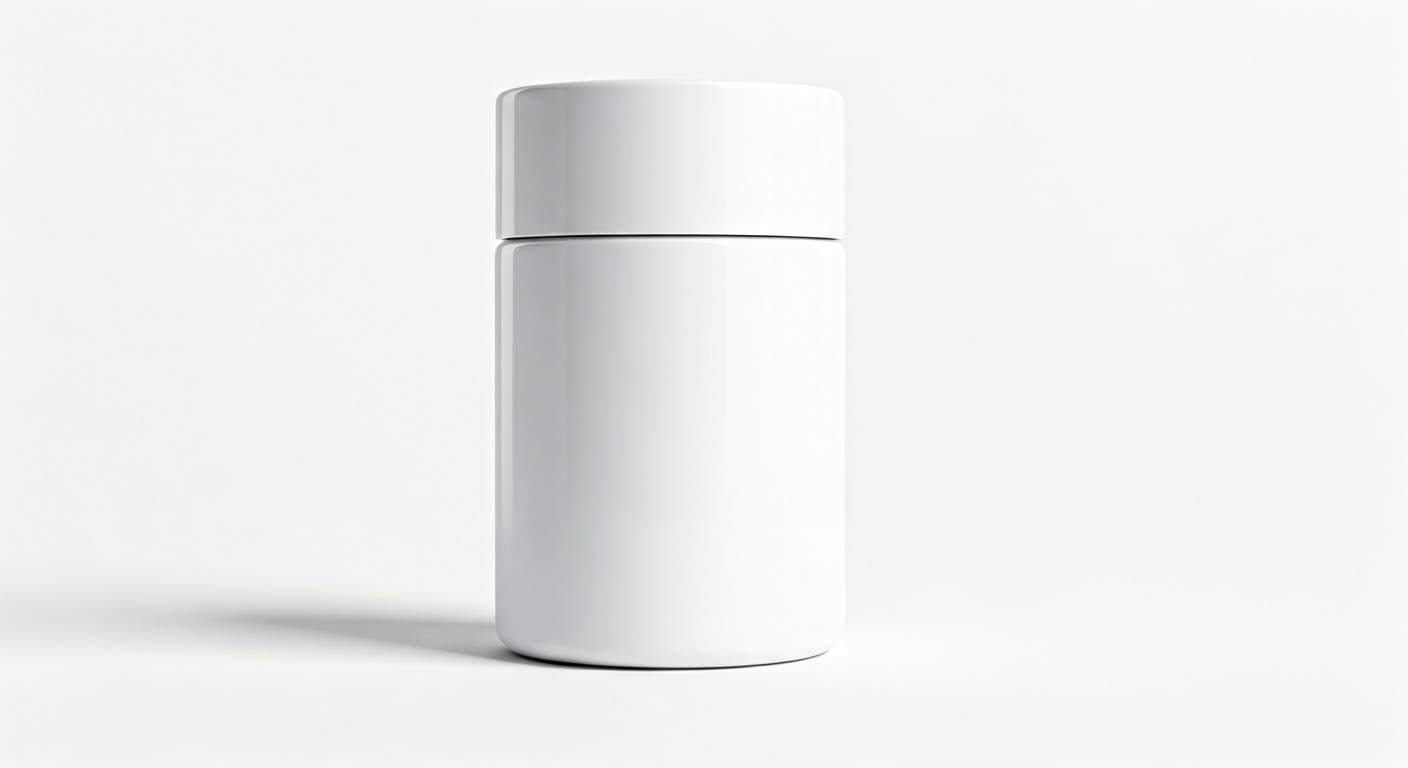
In the competitive world of online shopping, especially on platforms like Amazon, high-quality product photography can make or break your sales. Many Amazon sellers struggle with poor product images that fail to capture attention, leading to missed opportunities, lower conversions, and higher return rates. Without adhering to the Amazon Product Photography Guidelines, your listing might appear unprofessional, untrustworthy, or even risk being suppressed by Amazon itself. These guidelines provide a clear roadmap to showcase your products effectively, ensuring they stand out, attract potential buyers, and drive sales.
This extensive guide focuses on the Amazon Product Photography Guidelines. You will find insights into their importance, how to effectively optimize product photos according to Amazon’s guidelines, decide if you need a professional photographer, troubleshoot technical issues, and more. Let’s begin!
Why is Amazon Product Photography Important?
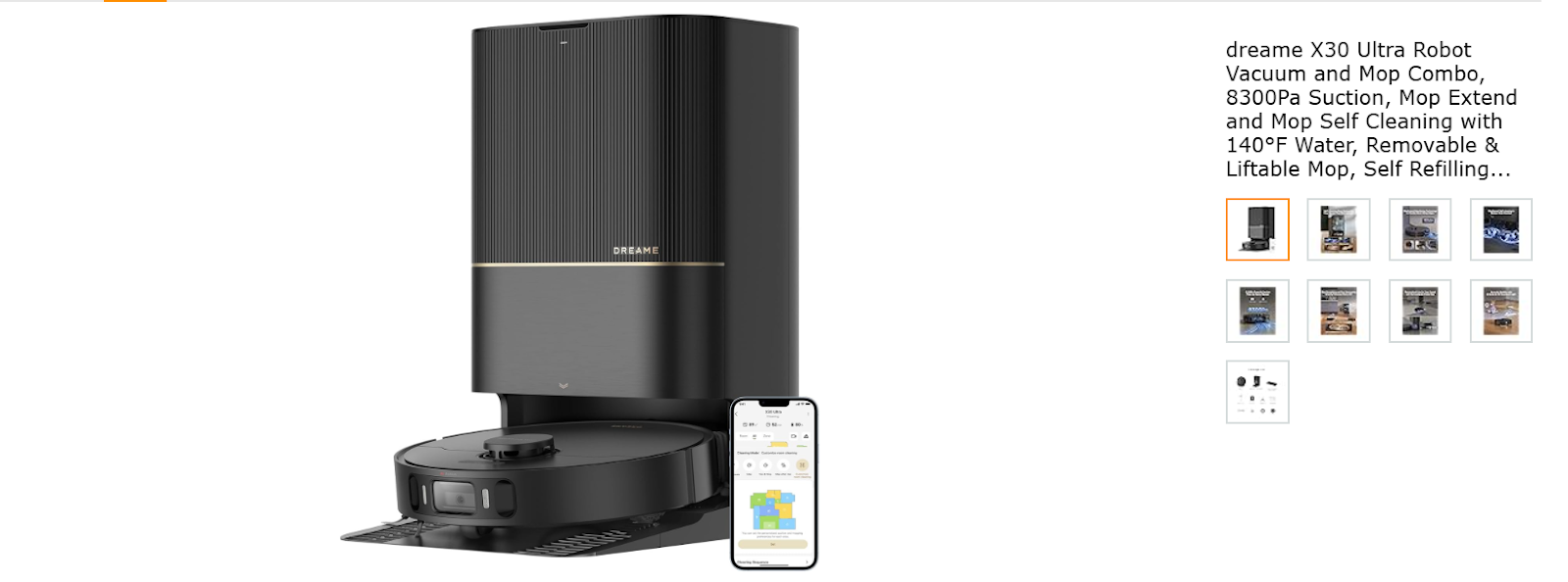
Imagine browsing an Amazon listing and finding just one poorly shot image. Would that convince you to buy the product? Most likely not. High-quality product photos play a crucial role in stimulating the tangibility of offline shopping. They help customers evaluate the product, increasing their confidence in their purchase decisions and maintaining a positive brand reputation.
After all, a beautifully realistic product image reduces the discrepancies between customer expectations and the actual product, decreasing return rates, further leading to happy customers and boosting sales.
What are the Amazon Product Photography Guidelines?
Amazon’s Product Photography Guidelines are designed to ensure that customers see accurate, helpful, and high-quality images. They include key aspects such as high-quality images, strict white background image requirements, lifestyle images to show your products in action, and unique shots to highlight specific features of your product. Let’s understand these aspects in detail.
1. High-Quality Images
Whether you’re selling a simple kitchen knife or a high-tech gadget, the product’s quality must be crystal clear in every image. Amazon’s guidelines require the main product photo to be at least 1,000 pixels on each side for zoom functionality, allowing customers to see product features.
Each product detail page should include at least six images highlighting important information, various angles, and features to boost conversions. Avoid blurry, poorly lit photos that misrepresent your product. Adjust camera settings—white balance, flash, and picture size—for optimal results.
Finally, avoid over-editing; maintain a realistic look to ensure your photos remain natural and appealing.
2. White Background and Product Image Requirements
Amazon is strict about its “pure white background” rule (#ffffff), which is one of the key Amazon image requirements. This requires every product’s main image to be shot against a clean, white backdrop. Implementing this policy ensures a unified look across different product categories, making Amazon a neat and professional online marketplace.
It’s also essential to adhere to the mandatory image size and file format requirements. Amazon prefers JPEG but also accepts TIFF, PNG, and non-animated GIFs. Additionally, images should be at least 500 pixels on the shortest side, although 1,000 pixels or more allows zoom functionality, enhancing the shopping experience.
3. Lifestyle Images
While white-background shots are essential, they only tell part of your product’s story. Lifestyle images help customers visualize your product in real-life scenarios, adding context and emotional appeal. For example, show a non-stick fry pan sizzling an omelet during breakfast or headphones worn during a workout.
Ensure your product remains the highlight—avoid backgrounds, props, or models stealing focus. Adhere to Amazon’s guidelines and align the lifestyle portrayed with your target audience’s aspirations for maximum engagement and impact.
Read: How to Achieve Stunning Product Photography with Models
4. Unique Features
Every product has unique features that set it apart. Highlighting these aspects in your Amazon product photos adds value and convinces buyers of its worth.
For instance, showcase a handbag’s unique buckle or special inner pocket or emphasize a water purifier’s filtration technology through clear visuals and infographics.
Ensure the images are crisp, clear, and well-lit, helping customers visually “experience” these features. Detailed shots build trust, improve understanding, and empower customers to make confident purchase decisions.
Read: Unlocking 9 Latest Fashion Photography Trends in 2024
How to Optimize Product Photos According to Amazon’s Guidelines?
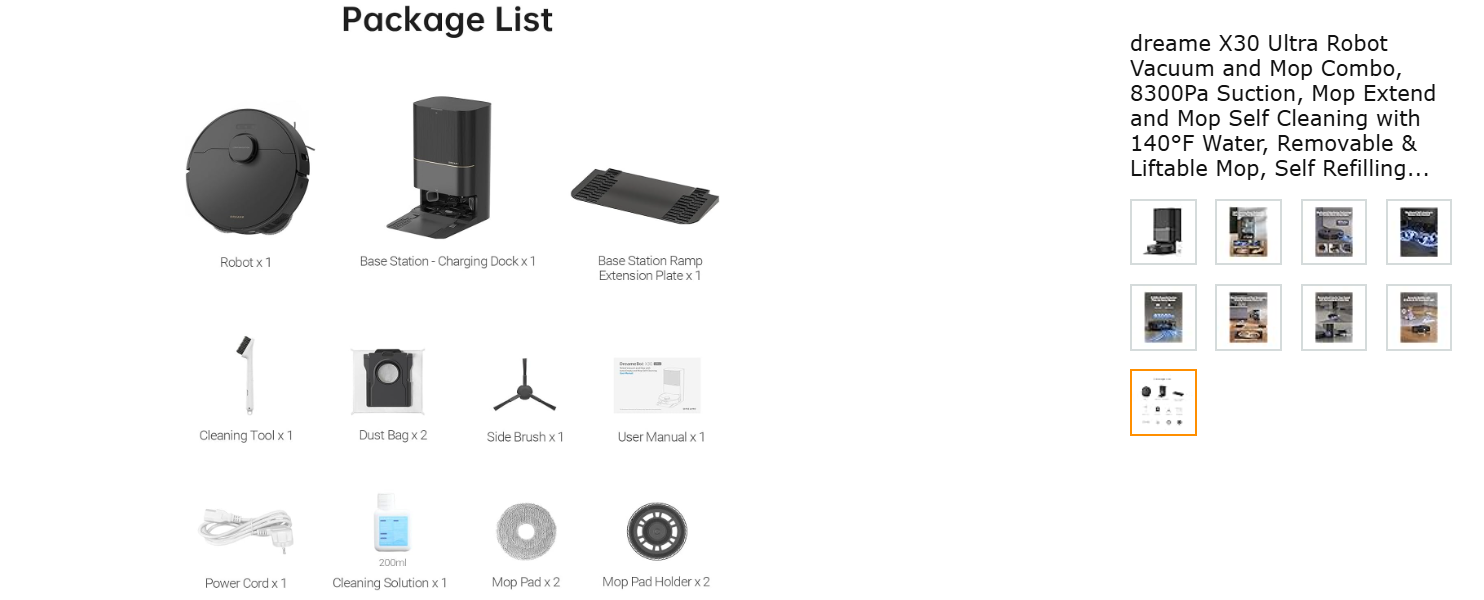
Optimizing your Amazon product photos according to Amazon’s guidelines can significantly enhance your product’s visibility and click-through rate on your product page. By carefully adhering to these guidelines, you can create product images that are both appealing and informative, ultimately leading to a better customer shopping experience and increased sales. Here’s how you can optimize your Amazon product images:
1. Master the Main Image
The main image, or the first image, is the front cover of your Amazon product listing, making it critical for grabbing attention in search results or related product sections.
Amazon requires a pure white background (255, 255, 255), with the product covering 85% of the frame. Use a high-resolution, clear image to enable the “zoom-in” feature.
Choose an attractive and informative angle, showing key features at a glance. Avoid unnecessary accessories. Your main image directly impacts click-through and conversion rates, so invest effort into perfecting this crucial shot.
2. Use Additional Images to Tell a Story
Additional images give you the chance to showcase your product creatively while following Amazon’s guidelines. Use these images to highlight features, connect with lifestyle visuals, and convey useful information through infographics.
Create a narrative by showing the product from different angles, close-ups of key attributes, or steps in its use. Include packaging images for an unboxing experience, but ensure the product remains the focal point.
High-quality additional images provide a comprehensive view and visually answer customer questions, boosting conversions.
3. Highlight Benefits, Not Just the Key Features
While it’s essential to outline key features of your product in the images, it’s the benefits that sell. So, instead of merely stating what your product does or what it includes, highlight how it can solve problems, improve the buyer’s life, or offer them joy.
For example, if you’re selling a high-speed blender, focus not just on the motor or blades. Show how it easily blends whole fruits into smoothies, saving time during breakfast. Convert feature-focused details like a “500-watt motor” into benefit-driven descriptions like “quickly processes all your ingredients.”
By conveying benefits through your images, you address consumers’ implicit question—”What’s in it for me?” This can serve to create more compelling and persuasive product listings that resonate better with your customers, impacting their purchasing decisions positively.
4. Use Infographics Wisely
Infographics are an effective way of conveying information about your product quickly and memorably. By combining graphics and brief text explanations, these visuals can help deliver critical details about the benefits of your product, usage, and features. However, it’s crucial to use infographics wisely to avoid overwhelming your customers or diluting your product’s narrative.
Keep your infographics simple, crisp, and easy to understand. Don’t overcrowd them with too much information. Instead, focus on 2-3 main points per image. For instance, instead of saying “easy to assemble,” show a simplified assembly procedure.
Infographics can be particularly useful when comparing your product with others, constructing a size reference, or demonstrating a unique feature.
5. Optimize for Mobile Viewers
In a mobile-first world, a good portion of Amazon’s traffic comes from mobile devices. Hence, it’s essential to ensure that your product images are optimized for mobile viewers.
A perfect product shot on a desktop could be a mediocre one on a smaller screen. Thus, planning your photoshoot with a mobile-first mindset can help you capture effective images across all platforms.
For instance, close-up shots or tightly cropped images work better on mobile screens as they show product details clearly, even on smaller displays. Similarly, infographic text must be big enough to be legible on smaller screens.
A good practice is to test your images on various devices before uploading them to Amazon.
6. Focus on Proper Lighting
Great lighting can highlight your product’s features, create depth, and affect colors. Good lighting should emulate a natural lighting environment where the product looks realistic. Whether you’re using natural sunlight or artificial studio lights, knowing how to manipulate them can transform your product photo drastically.
Artificial lighting gives you greater control, serving well for white background images. On the other hand, natural light can work wonders for lifestyle images, adding a warm, authentic feel to the photos. Remember to use reflectors and diffusers to soften harsh shadows or highlights.
An important tip—don’t mix light sources. Mixing natural with studio lighting could result in color cast issues. The overall lighting should be neutral and correctly white-balanced, adding childlike authenticity to your images.
7. Showcase Social Proof (EBC and A+ Content)
On Amazon, using Enhanced Brand Content (EBC) or A+ Content can provide social proof that encourages customers to trust and choose your brand over competitors.
By leveraging EBC or A+ Content tools, brands can significantly elevate their product listings with visually rich content. Here, sellers can share their brand story, include lifestyle images, comparison charts, product videos, and even customer testimonials—enabling customers to make informed purchase decisions.
Including positive customer reviews, star ratings, customer testimonials, user-generated content, endorsements, or expert opinions can significantly enhance the credibility of your product and your brand.
8. Maintain Consistent Branding
Maintain a consistent visual style across all your images—a specific color palette, a signature background, a similar setup, or props that resonate with your brand’s personality. While the product changes, these constant elements will tie your images together, building a recognizable and memorable brand image.
This not only improves customer experience but also contributes to building long-term loyalty. Consumers tend to return to brands that they recognize and trust. So, consistent branding through your product photos can work wonders in building that familiarity and connection with your customers.
9. Utilize Comparison Charts
Comparison charts can be beneficial when you have a range of similar products or want to position your product against competitors. These charts quickly show how different products measure against each other in terms of crucial features. This comparison provides clear-cut value to customers, helping them make an informed decision and fostering confidence in their purchase.
For instance, if you have a range of yoga mats with variations, a comparison chart can summarize the unique features, dimensions, colors, and materials all in one place.
Also read Pose Like a Pro: 25 Fashion Photography Poses to Try
Should You Hire a Professional Photographer for Amazon Product Photography?
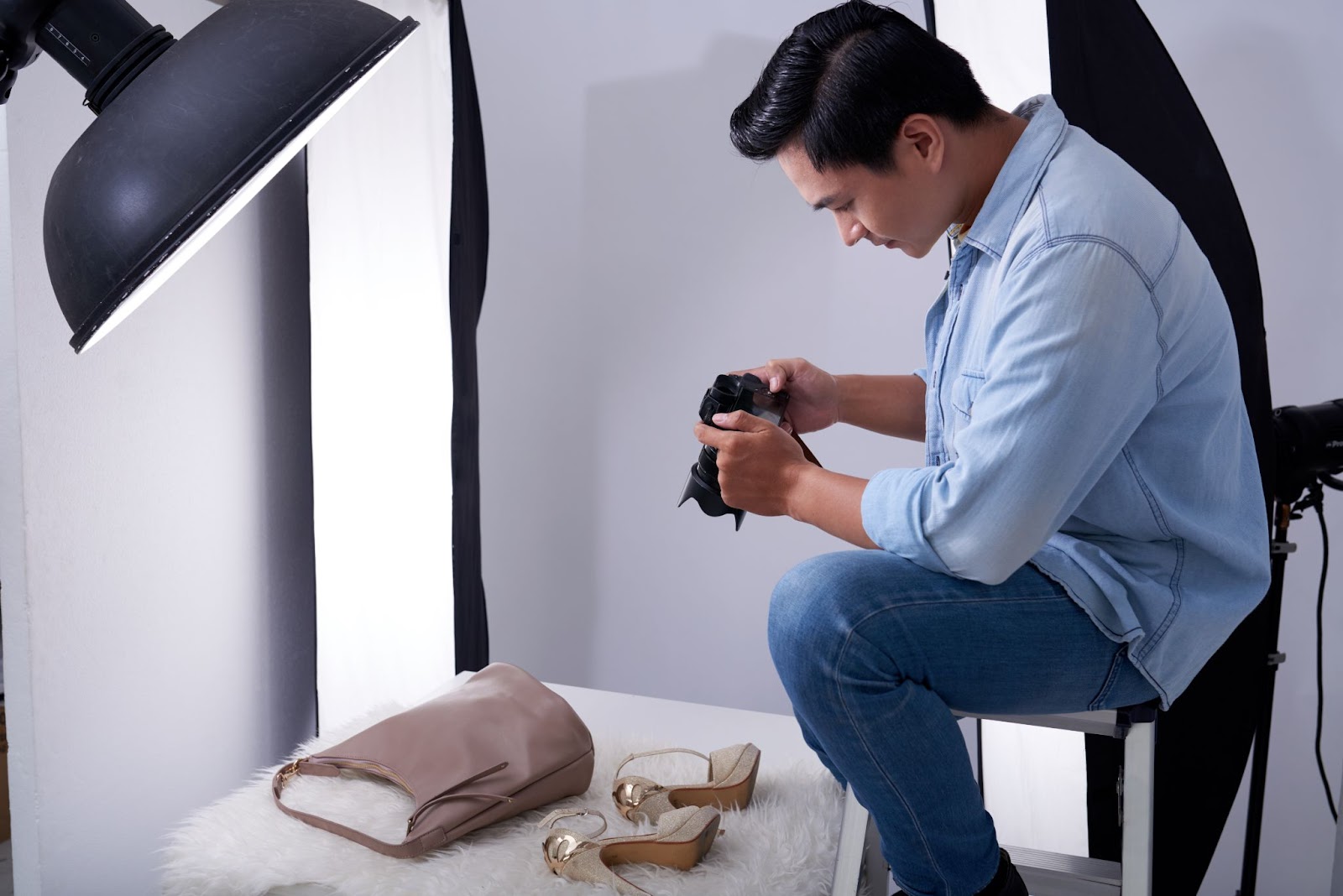
You may be pondering whether to hire a professional or do it yourself. If you lack the necessary equipment or are not confident about achieving the quality required, investing in a professional photographer who is well-versed in the Amazon Product Photography guidelines can save you time and effort. Let’s understand the pros and cons of hiring a photographer as well as how to hire one.
Pros and Cons of Hiring a Professional Photographer
Before you decide to hire a professional photographer, let’s weigh the pros and cons:
Pros
- Professional photographers possess the required skill set to capture high-quality product images.
- They have the necessary equipment, lighting setup, and editing software.
- Managing a photo shoot is time-consuming. By employing a professional, you can invest that time in other important business operations.
- For specific types of photography, like 360-degree or lifestyle shots, a professional photographer’s expertise can prove invaluable.
Cons
- Hiring a professional photographer involves an extra cost, which may not be preferable for businesses with a tight budget.
- Finding the right photographer who understands your brand and product can be challenging.
- Control over the shoot and the final images might be limited as they are now in the hands of a third party.
Considering these factors can guide you in deciding whether to hire a professional or go the DIY route. Remember, quality product images are not a mere add-on; they’re an essential part of your Amazon listing that directly impacts your sales and brand reputation.
Finding the Right Photographer
If you decide to hire a professional, choosing the right product photographer is important to ensure your product photos do justice to your offerings and attract potential customers. Follow the steps below to find the right photographer for yourself.
- Research and Portfolio Review: Start by reviewing the photographer’s portfolio to assess their style, quality, and expertise in product photography.
- Discuss Your Brand and Expectations: Have a detailed conversation about your brand, product, and what you expect from the photos. Ensure they understand your vision and unique offerings.
- Verify Knowledge of Amazon Guidelines: Confirm that the photographer is familiar with Amazon’s product photography guidelines to ensure compliance.
- Copyright and Usage Rights: Discuss copyright ownership to ensure you retain the rights to use the images for your business needs.
- Assess Experience and Fit: Ensure the photographer is dependable, responsive, understands your brand, and fits within your budget.
Also, read our blog on Type of Fashion Photography: A View on 9 Different Types
What are Some Common Technical Issues and Their Solutions?
At times, you might face technical hiccups that hinder achieving impeccable Amazon product photos. Whether it’s adding incorrect text, logos, graphics, dealing with non-white backgrounds, or coping with cropped or inaccurate product display—each has a workaround. This segment deciphers some common issues and their solutions to ensure you create Amazon-compliant, winning product shots.
Text, Logo, Graphics, Watermarks
Amazon’s guidelines prohibit text, logos, graphics, or watermarks in main product images, as they should focus solely on the product itself. Additional elements create distractions and inconsistent customer experiences. However, logos or text incorporated directly into the product (e.g., book titles or labeled bottles) are allowed.
For secondary images—such as Lifestyle, Infographics, or EBC/A+ content—text, logos, and graphics can be used to highlight features, comparisons, and how-tos. Ensure these elements are well-integrated and enhance, rather than hinder, the understanding of your product.
Non-White Backgrounds
While the main image must feature a pure white background, non-white or lifestyle backgrounds for secondary images are acceptable and encouraged. These backgrounds add visual interest, provide context, show scale, and evoke emotions that resonate with your audience.
For example, a camping tent showcased in a forest creates relatability, while an espresso machine in a chic kitchen feels natural.
However, ensure these images meet Amazon’s quality and content standards—backgrounds must be free of text, logos, or watermarks, and the product should remain the focal point in every image.
Cropped or Inaccurate Product Display
To accurately represent your product, all images should be complete and true to reality. Avoid cropped images that cut off parts of your product, as this can mislead buyers.
Your main image must cover at least 85% of the frame per Amazon’s guidelines, ensuring customers see the entire product. Images should reflect the correct color, texture, size, and shape.
For multiple components, use additional images or infographics to highlight them. Discrepancies between images and the actual product can lead to negative reviews and increased return rates, negatively impacting your seller’s reputation.
Image Resolution and File Formats
High-quality product images on Amazon require adherence to proper resolution and file formats. Images should have a minimum resolution of 500 pixels on the shortest side, with 1000 pixels or more recommended for zoom functionality.
Using high-resolution images ensures clarity, but balancing file size is essential to maintain page loading speed. Accepted file formats include TIFF, JPEG, GIF, and PNG. These technical details are crucial for highlighting product details and improving your Amazon listing effectively.
Also, read Essential Tips for Fashion Clothes Photography
Level Up Your Brand Game with Flix Studio
With Flix Studio, managing your photoshoots has never been easier. Stay in complete control with a centralized platform that keeps you informed, and tracks project progress in real-time. Receive instant shoot updates through a reliable notification system, eliminating the need for constant calls. Easily review images, provide feedback, and download high-quality photos—all in one place.
Our image marking system ensures efficient communication with a shorter feedback loop. From kickoff calls to final image reviews, Flix Studio empowers you to oversee every step of your project seamlessly, delivering results that meet your expectations.
Conclusion
In the competitive Amazon marketplace, high-quality product photography plays a crucial role in boosting visibility and sales. From mastering Amazon’s guidelines to deciding whether to hire a professional photographer, each step impacts your product’s success. Utilizing A+ content, addressing technical issues, and finding effective solutions streamline the process.
So, follow the comprehensive guidelines and tips highlighted in the blog, and create product pictures that do more than just look good. Create images that speak volumes about who you are as a brand, compellingly narrating your product’s story. After all, your images represent your product to the world—even more, your commitment to quality and your reputation in the marketplace. Make sure they depict the best!
Frequently Asked Questions
What is the ideal resolution for Amazon product photography?
The ideal resolution for Amazon product photography should be at least 1000 pixels on each side to enable the zoom feature. Amazon insists on a minimum of 500 pixels on the shortest side, but it’s beneficial to go beyond the bare minimum for greater clarity and detail.
Do I need a professional photographer for my Amazon product photography?
Whether you need a professional photographer for your Amazon product photography depends on your skill level, resources, budget, and time. Although it might be an upfront cost, having professional and high-quality images is arguably the best way to boost your product visibility and sales.
How many images should I include in my Amazon listing?
Ideally, you should use all the allowable slots in an Amazon listing, which is nine images. This provides ample opportunity to showcase your product from various angles and uses, highlighting all key features. More images can lead to better customer understanding, positively impacting purchase decisions.

